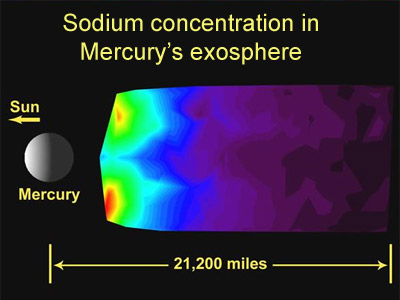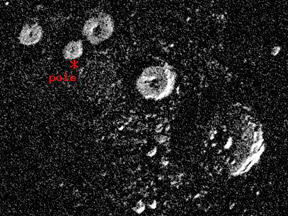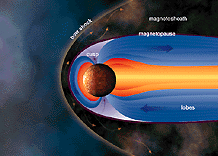Mercury Statistics
| Planetary Symbol: |  |
Name in Roman/Greek Mythology: | Mercury/Hermes |
|---|---|---|---|
| Diameter: | 4,878 km (3,030 miles) | Rotation Period about Axis: | 58.65 days |
| Mass: | 0.33x10^24 kilograms (0.06 x Earth's) | Revolution Period about the Sun: | 0.24 years |
| Density: | 5,427 kg/m^3 | Tilt of Axis: | 0o |
| Minimum Distance from Sun: | 46.0 million km (28.6 million miles) |
Surface Gravity: | 3.7 m/s^2 (0.38 x Earth's) |
| Maximum Distance from Sun: | 69.8 million km (43.4 million miles) |
Temperature Range on Mercury: | -184o C to 427o C (-300o F to 800o F) |
| Orbital Semimajor Axis: | 0.387 AU (Earth=1 AU) | Average Surface Temperature (K): | 440K |
| Minimum Distance from Earth: | 77.3 million km (48.0 million miles) |
Satellites: | 0 |
 Comparative Planetary Statistics -- in table form
Comparative Planetary Statistics -- in table form
 Comparative Orbital Statistics -- in table form
Comparative Orbital Statistics -- in table form
Last modified March 5, 2003 by Randy Russell.


 Mercury Image Archive
Mercury Image Archive







